
views
What is the meaning of the song “Stick Season”?
“Stick Season” is about being stuck in the painful post-breakup period. As a whole, the song “Stick Season” describes feelings of pain, loneliness, and depression when missing someone that you used to be in a relationship with. Kahan details how his former partner “kept on drivin’ straight and left [their] future to the right,” implying that they ended things and seemingly left him behind. However, the song goes much deeper into Kahan’s mental state as he grapples with these feelings, describing him as “stuck between [his] anger and the blame that [he] can’t face.” Just like he’s stuck in the emotional fallout of his relationship, Noah’s also stuck in the small town he’s grown up in as he’s processing these difficult emotions. He describes how he sees his ex-partner’s mom around their small town, and while her presence reminds him of his pain, she barely remembers him and doesn’t see him as significant. This metaphor of being “stuck” also applies to the title of the song—stick season. As Kahan describes it, “it’s a song about the time in Vermont—‘stick season’—when all the leaves are off the trees…It’s just kind of grey and cold, and there’s no snow yet, but the beauty of the foliage is done.” So what does “stick season” have to do with the meaning of the song? Just like Kahan is stuck in this depressive emotional state and stuck in his small town life, the world around him is also “stuck” in this grey period between two beautiful times of year. Ultimately, however, we know that both parties will come out on the other side: Kahan out of his post-breakup despair into a healthier emotional state, and the Vermont landscapes out of this miserable in-between season into winter, spring, summer, and fall.
“Stick Season” Lyric Analysis
Verse 1 In the first verse of the song, Kahan sings about a person who once thought the world of him before having “a change of heart” and leaving him behind—they “kept on drivin’ straight and left [their] future to the right.” He then details the difficult emotions he’s dealing with after the dissolution of this relationship: “I am stuck between my anger and the blame that I can’t face.” He also notes that even “smoking weed” can’t replace his memories of the relationship or make them less painful. The last line of the first verse is “Doc told me to travel, but there’s Covid on the planes.” Essentially, Kahan’s therapist told him to get out and experience the world more in order to combat his mental health struggles, but he feels frightened by the dangers associated with traveling. “Obviously the pandemic was raging when I wrote ‘Stick Season,’” commented Kahan. “The idea of feeling stuck or isolated by the current events in the world, the feeling that there’s really no escape from your situation. That plays into [the song’s] idea of feeling trapped in where you are.”
Chorus In the chorus, Kahan explicitly shouts out his love for his hometown (“I love Vermont”), before acknowledging that this time of year in Vermont is difficult—“the season of the sticks,” which is a gray and melancholy period. He then brings things back to his recently ended relationship, saying that he saw his ex-partner’s “mom, she forgot that I existed.” Kahan then shares more about his mental state and that the breakup was “half [his] fault, but [he] just likes to play the victim” and that he plans to “drink alcohol until [his] friends come home for Christmas.” “I always like to throw a good mom exchange into my songs,” shares Kahan, “and this one was particularly sad—the idea that there’s a person that was tangential to your life for so long that completely forgot about you.” “Especially in a small town,” continues Kahan, “you go to the grocery store and you’ll see every person from your past getting avocadoes, and there’s this feeling of, ‘I know I’m gonna see these people that represent a lot of pain for me and this person’s completely forgotten about me.’ It’s almost like you’re trapped in your breakup and you can’t escape these people that have a part in your life, but they might not even remember you.” In the final section of the chorus, Kahan finishes his musing on how he misses his ex-partner and the pieces of themselves that they left behind—as well as the emotions he feels (but must accept) in their absence: And I'll dream each night of some version of youThat I might not have, but I did not loseNow you're tire tracks and one pair of shoesAnd I'm split in half, but that'll have to do.
Verse 2 The second verse touches on Kahan’s family history of mental health struggles: “So I thought that if I piled something good on all my bad / That I could cancel out the darkness I inherited from dad.” He ties these feelings of depression in with the pain from his break-up, singing that he’s “no longer funny” because he misses the way his former partner would laugh. Kahan confirms that the line about “his dad is a reference for [his] family’s disposition for depression.” As Kahan describes it, “I feel like it was passed down to me, since we are our parents in a lot of ways and we’re everything that happened to our parents.”
Bridge In the song’s brief bridge, Kahan eloquently encapsulates the heartbreak of losing someone who you once considered to be your other half—but he also reflects on the need to deal with and move past this heartbreak, no matter how hard it may be. “When you’re in that really bottomless pit of despair right after you lose somebody,” explains Kahan, “it does feel like it’s never going to end. But, like the weather in Vermont, it’ll become winter, then spring, then summer again. In the aftermath of a relationship, it’s the same thing. You’ll move forward and find somebody new, or you’ll find something in yourself that makes you happy, and, eventually, you’ll find that piece again. I really wanted to connect those two themes together.”
What does “stick season” mean in New England?
“Stick season” refers to the period between autumn and winter. It’s mostly used in areas like New England (specifically Vermont and New Hampshire) that have only deciduous trees. In the fall, the foliage on these trees is stunning in beautiful. In the winter, the landscapes transform into a winter wonderland. In the weeks in between fall and winter, however, the foliage is gone but the snow hasn’t yet fallen, leaving a barren-looking landscape of grey skies and stick-like trees. Giving his own take on the “stick season” idiom, Kahan stated in an interview that stick season is “a time of transition in the weather, but also in a lot of people’s lives.” Kahan then went on to describe the “stick season” he was experiencing when he wrote the song: “I thought I was going to go to college but, instead, I got a record deal. I was at home in Vermont making music, and my friends would come home for Thanksgiving, when stick season was in full swing. They would leave, and that loneliness would come back. [During Covid], that feelings of being left behind or out of place was at the forefront of my mind again.”
“Stick Season” Music Video
The music video for “Stick Season” shows Kahan driving through his Vermont hometown. [youtube.com/watch?v=JKrDdsgXuso&pp=0gcJCdgAo7VqN5tD The video’s] opening shot shows Noah Kahan getting into the driver’s seat of a car, before he begins to drive and sing the first lines of the track. The rest of the music video alternates between shots of Kahan driving through or standing in front of scenic landmarks in Strafford, Vermont (the singer’s hometown). Some of the landmarks shown in the video include Coburns’ General Store, the Strafford Town House, the Strafford Post Office, and (seemingly) Kahan’s childhood home. Other shots also show Kahan revisiting areas from his childhood and engaging in leisure activities, like drinking beer, playing golf, and shooting hoops. The music video ends with Kahan parking and exiting his car before the film cuts to black. Ultimately, the central focus of the music video is (arguably) the beauty of the Vermont landscape and the nostalgic feelings expressed by Kahan for his small hometown.
“Stick Season” Release & Popularity
“Stick Season” was released in 2022 after being teased on TikTok in 2020. Noah Kahan first released a snippet of “Stick Season” on TikTok in 2020. “I put it on TikTok,” relays Kahan, “and, since I’m incredibly insecure, I was gonna delete it because I felt like no one was watching it, there were no comments or anything. I waited 20 minutes and it started to blow up, so I finished the song after I saw the first part doing well on TikTok. And that’s how the song was made!” With the TikTok videos of the song continuing to gain traction, the complete song was officially released in 2022. The same-named studio album, Stick Season, was released on October 14th, 2022. The song and album skyrocketed into popularity almost overnight. Kahan ended up being nominated in prominent categories at the Grammys, Brit Awards, and Billboard Music Awards. “Stick Season” also became Spotify’s most-streamed song in the UK in 2024. Kahan initially thought that the song was too specific and honest to be relatable to a wide audience, but he’s enjoyed “seeing it connect with people [outside of New England] and having people share their own meanings of what ‘stick season’ might mean to them, or what their hometowns means to them.” “It’s not lost on me how rare it is to have your own truth be what has led to wider success,” Kahan also noted. “What’s important is that the emotion leads to those specificities—you’re not just talking about the Walmart parking lot just because you happen to have a Walmart parking lot in your town.”
Fun Facts About “Stick Season”
The song was covered by Olivia Rodrigo on BBC Radio 1. “Stick Season” was already seeing a moderate amount of success in the U.S. after its release. However, the song began to chart internationally after singer-songwriter Rodrigo covered it as part of BBC Radio 1’s Live Lounge series. After her cover went viral, Rodrigo and Kahan went on to perform the song together during the former’s tour stop at Madison Square Garden, and Kahan ended up covering Rodrigo’s “lacy” in his own Live Lounge appearance. The two artists also released a double-sided 7” vinyl featuring both of their Live Lounge tracks. One side has Rodrigo singing “Stick Season,” and the other has Kahan singing “lacy.”
The full Stick Season album is described as a “love letter to New England.” At a 2022 concert in Northampton, Massachusetts, Kahan shared with the audience that he considers Stick Season to be a “love letter to New England.” Indeed, many of the tracks on the album mention or pay homage to places in New England (which is where Kahan grew up). Some songs, like “Northern Attitude,” also touch on stereotypes about New Englanders, such as them being reserved or closed off to outsiders.
Kahan cites Phoebe Bridgers and Sam Fender as two influences for the song. In an interview with Billboard, Kahan shared that his first two studio albums had more of a pop sound, since he believed that making songs as universal and relatable as possible would make them more successful. However, he ditched this tactic for “Stick Season,” instead writing a song with “unprecedented” lyrical detail, as inspired by storytelling songwriters like Phoebe Bridgers and Sam Fender.
Similar Songs by Noah Kahan
Homesick The song “Homesick” flips the title idiom to describe dual feelings: missing your hometown and being sick of your hometown. Kahan writes about longing to leave New England but not finding any reason or opportunity to do so (“I would leave if only I could find a reason”). He also reflects on his mixed feelings about living in a small town, encompassing both his appreciation for his community and frustrations with the stagnancy of life there (“Time moves so damn slow / I swear I feel my organs failing”). Ultimately, Kahan concludes that he’s most likely to spend the rest of his life in his hometown, thinking about what could’ve been and dying “in the house that he grew up in.”
Northern Attitude In a nutshell, “Northern Attitude” is the anthem for anyone who grew up in a town where the sun sets before 5pm. Kahan’s delicate lyrics touch on the cold and harsh environment he grew up in, as well as the way it affects everyone’s way of life. Specifically, it may mean that people are living for survival and contentment above all else (“Scared to live / Scared to die”). In the song, Kahan is singing to a person who wants him to abandon this mindset, pleading with them to be patient with him as he tries to rid himself of his ingrained beliefs and habits (“Forgive my northern attitude / Oh, I was raised out in the cold”).
The View Between Villages This final song on Stick Season is about the scenic drive between the towns of South Strafford and Strafford in Vermont—aka, the “view between villages.” Kahan sings about how this valley-view drive in his hometown never fails to fill him with happiness, nostalgia, and a sense of peace (“It's just me and the curve of the valley / There is meaning on earth / I am happy”). However, when he approaches the path into town, that serenity is replaced by the anxiety of nearing his childhood home and all the emotional pitfalls that exist there (“The things that I lost here / The people I knew / They got me surrounded / For a mile or two”). In the extended version of the song, the music plays over voice recordings of two older Strafford residents sharing their stories: Hazel Lewis and Melvin Coburn. Lewis is the oldest person in town, while Coburn owns the town’s general store. “The View Between Villages” is another example of the driving motif on the Stick Season album. Kahan has noted that “the idea of driving in a lot of the songs on the album speaks to the idea of distance, and the idea of being forgotten. Someone being able to just make a decision to not turn and having that person literally drive away from your life.”
Who is Noah Kahan?
Noah Kahan is a 28-year-old American folk-pop singer-songwriter. Kahan’s career first kicked off in 2017, when he signed with Republic Records. Two years later, he released his debut album Busyhead (2019), which was followed by I Was / I Am in 2021. While these albums had some hit singles—like the internationally gold-selling “Hurt Somebody—they didn’t gain much traction among a wider audience. Kahan’s third studio album, Stick Season, however, was released in 2022 and quickly made him a household name. Kahan grew up on a tree farm in the small New England town of Strafford, Vermont. He was taught to write by his mother, Lauri Berkenkamp, and his father, Josh Kahan, taught him to play guitar. His hometown and his family relationships play a big part in his lyrics and the overall themes of his songs. As of July 2022, Kahan lives in Watertown, Massachusetts, with his fiancée, Brenna Nolan, and his German shepherd, Penny.











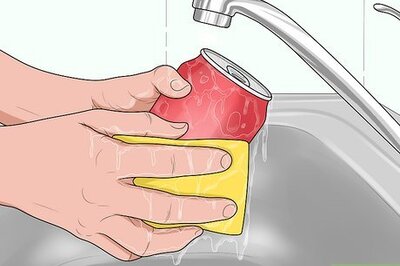

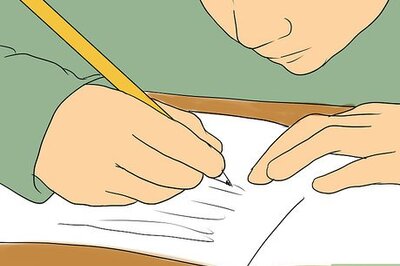
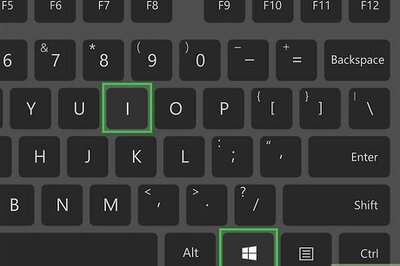

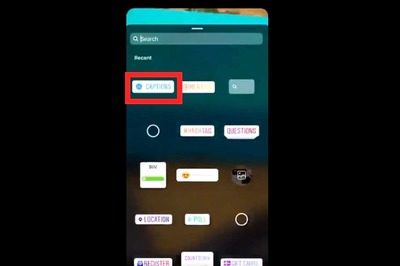


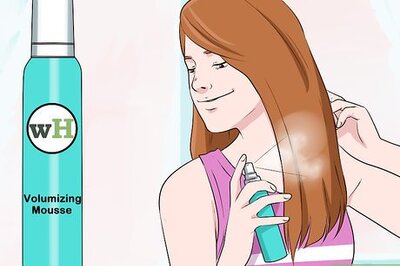
Comments
0 comment